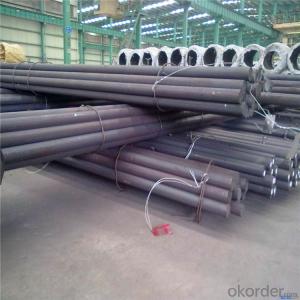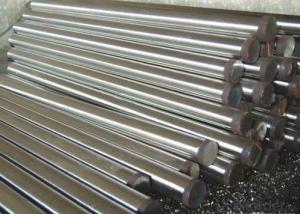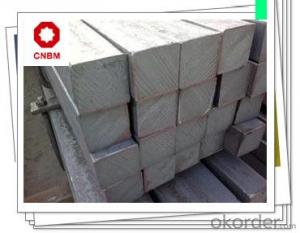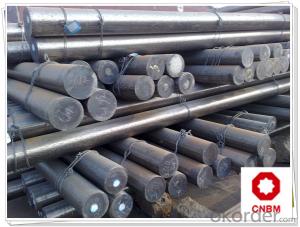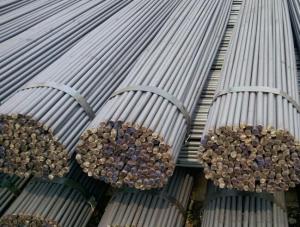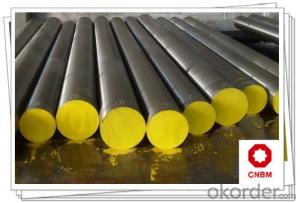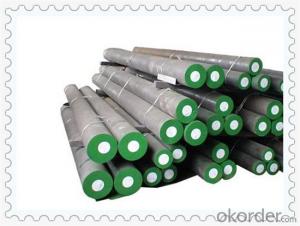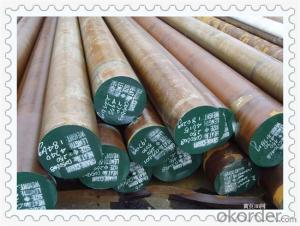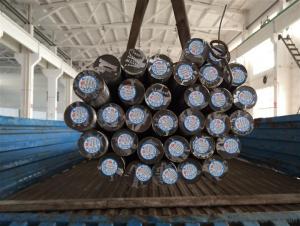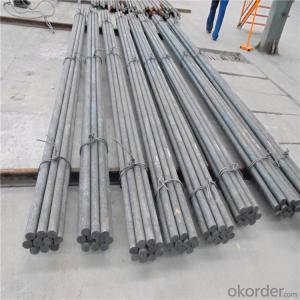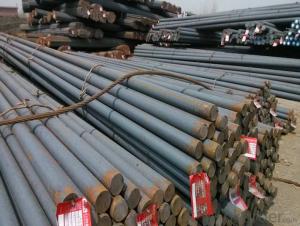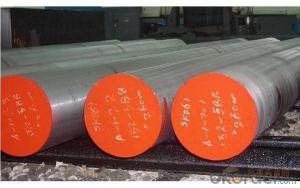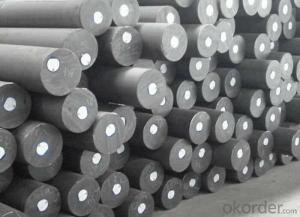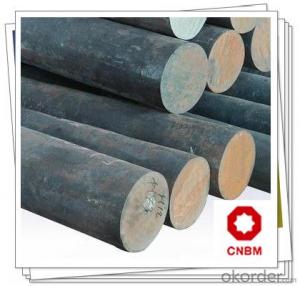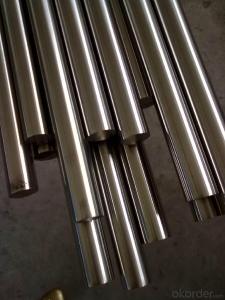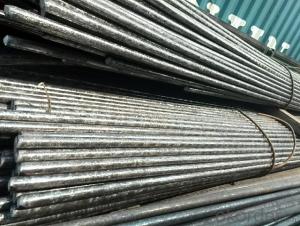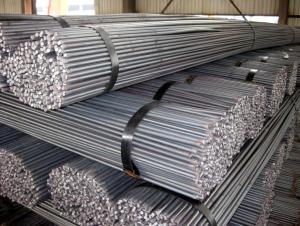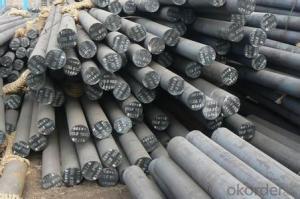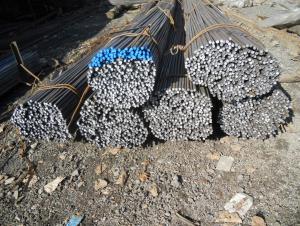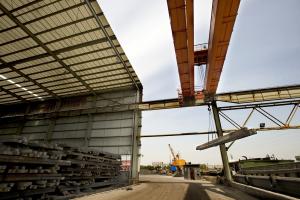JIS S20C Carbon Steel Round Bar
- Loading Port:
- Tianjin
- Payment Terms:
- TT OR LC
- Min Order Qty:
- 100 m.t.
- Supply Capability:
- 500000 m.t./month
OKorder Service Pledge
OKorder Financial Service
You Might Also Like
Specification
JIS S20C Carbon Steel Round Bar
Product Description of JIS S20C Carbon Steel Round Bar
1. Steel grade: SAE1020, 20#, C22, S20C
2. Length: 6M-12M
3. Diameter: 16mm-300mm
4. Product range: round bar, flat bar, square bar
5. Technique: Hot rolled, forged, cold drawn
Specification of JIS S20C Carbon Steel Round Bar
Material | S20C | Round bar | Dia(mm) | 16-300mm |
Process | EAF + LF + VD + Forged + Heat Treatment (optional) | Length (mm) | Max 12m | |
Heat treatment | Normalized / Annealed / Quenched / tempered | Flat bar | Thickness(mm) | 8-500mm |
Delivery condition | Hot forged +Rough machined (black surface after Q/T)+ Turned (optional) | Width(mm) | 70-200mm | |
Test | Ultrasonic test according to SEP 1921-84 D/d | Length (mm) | Max 12m |
Chemical Composition of JIS S20C Carbon Steel Round Bar
C | Si | Mn | Cr | Ni | Cu |
0.17~0.23 | 0.17~0.37 | 0.35~0.65 | ≤0.25 | ≤0.30 | ≤0.25 |
Photo Show of JIS S20C Carbon Steel Round Bar
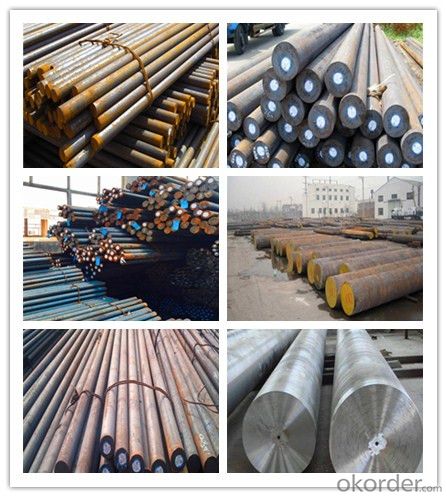
Packing and Delivery:
Packing in bundle package, or as customer's requirements.
Delivery Detail: 45 days after receiving the deposit.
Usage and Applications of JIS S20C Carbon Steel Round Bar
1. Steel round bar is used in a large number of architectural and engineering structures. Or it can be used in construction of plants for the production of steel house frames, high-voltage transmission towers, bridges, vehicles, boilers, containers, ships, etc.
2. And we can use this kind of product on the performance of the mechanical parts if the demand is not very high.
3. Some special material steel round bar can be used for main shaft of steamer, hummer shank, with big section and supper force.
Company Information
CNBM International Corporation is the most important trading platform of CNBM group.
Whith its advantages, CNBM International are mainly concentrate on Cement, Glass, Iron and Steel, Ceramics industries and devotes herself for supplying high qulity series of refractories as well as technical consultancies and logistics solutions.

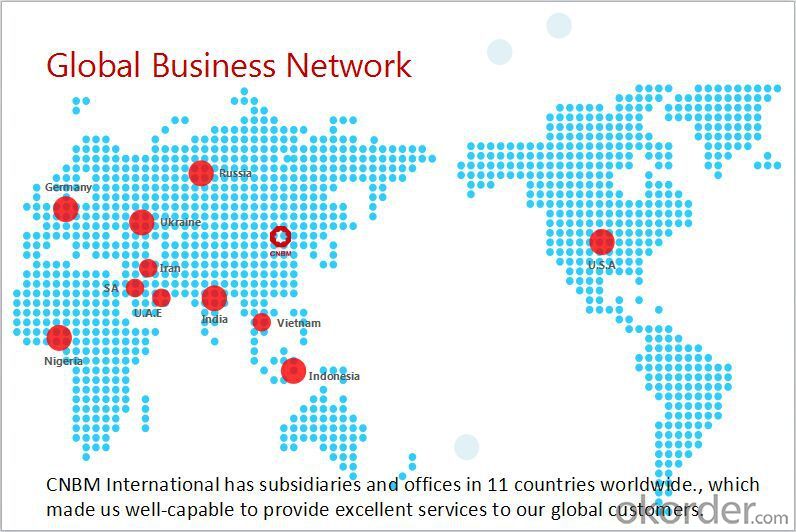
F A Q
1, Your advantages?
professional products inquiry, products knowledge train (for agents), smooth goods delivery, excellent customer solution proposale
2, Test & Certificate?
SGS test is available, customer inspection before shipping is welcome, third party inspection is no problem
3, Factory or Trading Company?
CNBM is a trading company but we have so many protocol factories and CNBM works as a trading department of these factories. Also CNBM is the holding company of many factories.
4, Payment Terms?
30% TT as deposit and 70% before delivery.
Irrevocable L/C at sight.
5, Trading Terms?
EXW, FOB, CIF, FFR, CNF
6, After-sale Service?
CNBM provides the services and support you need for every step of our cooperation. We're the business partner you can trust.
For any problem, please kindly contact us at any your convenient time.
We'll reply you in our first priority within 24 hours.
- Q: What are the different mechanical properties of steel round bars?
- The different mechanical properties of steel round bars include tensile strength, yield strength, elongation, hardness, and impact resistance. Tensile strength refers to the maximum amount of stress a material can withstand before breaking. Yield strength is the stress at which a material begins to deform permanently. Elongation measures the amount of deformation a material can undergo before breaking. Hardness determines the material's resistance to indentation or scratching. Impact resistance is the ability of a material to absorb energy during sudden impacts without breaking.
- Q: What is the maximum carbon content allowed for steel round bars?
- The maximum carbon content allowed for steel round bars can vary depending on the specific grade or specification of steel being used. However, in general, most standard steel round bars have a maximum carbon content of around 0.25% to 0.30%. This level of carbon content helps to maintain a balance between strength and ductility, ensuring that the steel is both strong enough to withstand load-bearing applications and flexible enough to be easily formed or machined. It is important to note that some specialized steels or specific applications may have different maximum carbon content requirements, so it is always essential to refer to the relevant specifications or standards for accurate and specific information.
- Q: What are the different types of steel round bars used in the power generation industry?
- Different applications in the power generation industry utilize various types of steel round bars. These round bars are carefully selected for their distinct properties and characteristics, which are essential for different power generation processes. Commonly used types of steel round bars in the power generation industry include: 1. Carbon Steel Round Bars: These round bars are extensively used due to their affordability, strength, and ease of fabrication. They find applications in power generation equipment like turbines, generators, and boilers. 2. Alloy Steel Round Bars: Alloy steel round bars are created by combining carbon steel with elements such as chromium, nickel, and molybdenum to enhance their mechanical properties. These bars offer increased strength, corrosion resistance, and heat resistance, making them suitable for high-pressure and high-temperature applications in power plants. 3. Stainless Steel Round Bars: Stainless steel round bars possess high corrosion resistance and excellent heat resistance. They are commonly employed in power generation equipment that comes into contact with water or steam, such as condensers, heat exchangers, and valves. 4. Tool Steel Round Bars: Tool steel round bars are renowned for their exceptional hardness, wear resistance, and toughness. They are frequently used in power generation equipment that undergoes frequent machining, cutting, or forming processes, including drilling equipment and turbine blades. 5. High-Speed Steel Round Bars: High-speed steel round bars are specifically designed to withstand high temperatures while maintaining their hardness and cutting ability at elevated speeds. They find applications in power generation equipment like cutting tools, drills, and milling machines. 6. Duplex Steel Round Bars: Duplex steel round bars combine austenitic and ferritic stainless steels, offering outstanding strength, corrosion resistance, and weldability. They are commonly utilized in power plants for piping systems, pressure vessels, and heat exchangers. It should be noted that the specific type of steel round bars utilized in the power generation industry can vary depending on the requirements and operating conditions of each power plant. Therefore, it is crucial to consult with engineers and experts to determine the most suitable type of steel round bars for a particular power generation application.
- Q: How many grades of steel are round steel?
- There are many kinds of steel. They can be divided into three categories: non alloy steel, low alloy steel and alloy steel by chemical composition. Ordinary steels are mostly unalloyed steels. Their quality is divided according to the impurities in the steel, namely ordinary quality carbon steel, high quality carbon steel and special quality carbon steel three kinds. Not by category.
- Q: Are steel round bars suitable for welding?
- Yes, steel round bars are suitable for welding.
- Q: What are the different grades of alloy steel round bars?
- There are several different grades of alloy steel round bars, including but not limited to, 4140, 4340, 8620, and 52100. Each grade offers specific properties and characteristics that make them suitable for different applications and industries.
- Q: Are steel round bars suitable for outdoor applications?
- Yes, steel round bars are suitable for outdoor applications. Steel is known for its durability and strength, making it a popular choice for various outdoor structures and applications. Steel round bars are often used in construction, fencing, gates, outdoor furniture, and other outdoor structures due to their resistance to corrosion and weathering. Additionally, steel round bars can be painted or coated to further enhance their resistance to outdoor elements.
- Q: What are the different types of steel alloys used for round bars?
- There are several different types of steel alloys used for round bars, each offering unique properties and characteristics that make them suitable for various applications. Some of the commonly used steel alloys for round bars include: 1. Carbon Steel: This is the most common type of steel alloy used for round bars. It contains primarily carbon and iron, and offers excellent strength and toughness. Carbon steel round bars are commonly used in construction, manufacturing, and general engineering applications. 2. Stainless Steel: This alloy contains chromium, which provides corrosion resistance and makes it suitable for applications where rust or oxidation is a concern. Stainless steel round bars are widely used in the food and beverage industry, as well as in marine and chemical industries. 3. Alloy Steel: This type of steel alloy is made by adding other elements such as manganese, nickel, or chromium to improve its mechanical properties. Alloy steel round bars are known for their high strength, hardness, and resistance to wear and tear. They are commonly used in automotive, aerospace, and machinery industries. 4. Tool Steel: Tool steel alloys are specifically designed to have high hardness, wear resistance, and toughness. They are used for making cutting tools, dies, and molds. Tool steel round bars are available in various grades, such as D2, O1, and A2, each with specific properties for different applications. 5. Duplex Steel: This alloy contains a combination of austenitic and ferritic stainless steels, offering a combination of high strength and corrosion resistance. Duplex steel round bars are used in applications where both strength and resistance to corrosion are required, such as in the oil and gas industry. These are just a few examples of the different types of steel alloys used for round bars. The specific choice of alloy depends on the desired properties and the intended application of the round bar.
- Q: What are the typical price ranges for steel round bars?
- The typical price ranges for steel round bars can vary depending on various factors such as the type of steel, the diameter, length, and the quantity being purchased. Generally, steel round bars can range in price from $1 to $5 per foot for common carbon steel grades. However, specialty and high-grade steel round bars can be priced higher, ranging from $5 to $20 per foot or even more. Additionally, larger diameter or longer length steel round bars may also be priced higher due to increased material and manufacturing costs. It is important to note that these price ranges are approximate and can vary based on market conditions, supplier pricing, and other factors. To get an accurate price range, it is recommended to contact steel suppliers or distributors for specific quotes based on your requirements.
- Q: What is the tensile strength of steel round bars?
- The tensile strength of steel round bars can vary depending on the specific grade or type of steel being used. However, on average, steel round bars have a tensile strength ranging from 400 to 500 megapascals (MPa). This means that steel round bars can withstand a pulling or stretching force of 400 to 500 MPa before experiencing permanent deformation or fracture. It is important to note that different grades of steel, such as mild steel, carbon steel, or alloy steel, may have different tensile strength values. Additionally, factors such as heat treatment, manufacturing process, and size of the round bar can also affect its tensile strength. Therefore, it is recommended to consult the specific manufacturer or supplier for accurate and precise information on the tensile strength of a particular steel round bar.
Send your message to us
JIS S20C Carbon Steel Round Bar
- Loading Port:
- Tianjin
- Payment Terms:
- TT OR LC
- Min Order Qty:
- 100 m.t.
- Supply Capability:
- 500000 m.t./month
OKorder Service Pledge
OKorder Financial Service
Similar products
Hot products
Hot Searches
Related keywords
